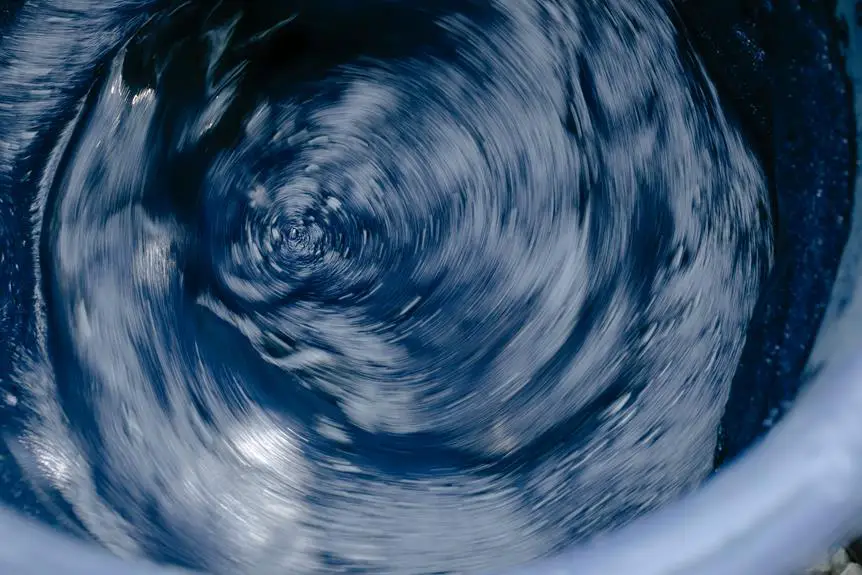You've probably heard the saying, 'You can't change the spots on a leopard.' But when it comes to dyeing viscose, you can change its color with the right process. Understanding how to dye viscose fabric can open up a world of creative possibilities for your projects.
In this guide, we'll delve into the properties of viscose, the types of dyes suitable for it, the essential steps for preparing and dyeing viscose, and how to care for your dyed fabric. By the end, you'll have a clear understanding of the entire dyeing process, empowering you to confidently transform your viscose fabrics into vibrant, personalized creations.
Key Takeaways
- Viscose fabric is a versatile material with a smooth, breathable, and comfortable texture.
- There are various types of dyes that can be used on viscose, including fiber-reactive dyes, acid dyes, basic dyes, and direct dyeing methods.
- Proper preparation of the viscose fabric, including washing and removing impurities, is crucial for achieving even coloration.
- After dyeing, it is important to take proper care of the dyed viscose by washing with cold water, avoiding color transfer, air drying, and using low heat and a pressing cloth when ironing.
Properties of Viscose Fabric
Viscose fabric is a versatile material that offers a smooth, breathable, and comfortable texture, making it ideal for various clothing and textile applications. Its properties make it highly absorbent, allowing it to take up dyes easily and retain vibrant colors. Viscose, also known as rayon, is derived from natural sources such as wood pulp, making it a semi-synthetic fiber. This composition gives it properties similar to those of natural fibers like cotton and silk, making it a popular choice for garments. The fabric drapes well, has a good drape retention, and is comfortable to wear, which is why it's often used in clothing such as dresses, blouses, and linings.
When it comes to dyeing techniques, viscose fabric can be dyed using various methods including immersion, direct, and discharge dyeing. The fabric's high absorbency allows it to take up dyes readily, resulting in rich, vibrant colors. However, it's important to note that the dyeing process for viscose requires careful attention to prevent damage to the fibers. Understanding the properties of viscose fabric is crucial for achieving successful dyeing results.
Types of Dyes for Viscose
To dye viscose, you can use different types of dyes, such as fiber-reactive dyes, acid dyes, or basic dyes, each offering unique colorfastness and application properties. When considering dyeing viscose, it's essential to understand the characteristics of each type of dye to achieve the desired results.
Here are some types of dyes commonly used for dyeing viscose:
- Fiber-Reactive Dyes: These dyes form a covalent bond with the viscose fibers, resulting in excellent colorfastness and wash-fastness. They're ideal for direct dyeing of viscose due to their reactivity with the cellulose fibers, resulting in vibrant and long-lasting colors.
- Acid Dyes: While primarily used for protein-based fibers like silk and wool, acid dyes can also be used for dyeing viscose. They offer a wide range of vibrant colors and are suitable for achieving deep and intense shades on viscose fabric.
- Basic Dyes: These dyes are cationic, making them suitable for dyeing viscose through direct application. Basic dyes are known for producing bright and vivid colors on viscose, offering good lightfastness properties.
- Direct Dyeing: This method involves directly applying the dye to the viscose fabric, making it a convenient and straightforward process for achieving a wide range of colors with good color retention.
Understanding the fiber reactivity and application properties of these dyes is crucial in achieving the desired results when dyeing viscose.
Preparing Viscose for Dyeing
Before starting to dye viscose, you need to prepare the fabric adequately to ensure the best results.
Pre-treatment methods are crucial in enhancing dye penetration and achieving even coloration. Begin by thoroughly washing the viscose fabric to remove any impurities, such as dirt, oil, or sizing agents. This can be done using a mild detergent and warm water, followed by rinsing and air-drying.
Next, consider using a scouring agent to remove any remaining natural waxes and oils that might hinder dye absorption. After scouring, the fabric should be rinsed and dried again.
Some pre-treatment methods also involve the use of mordants or chemicals to improve dye uptake and colorfastness, depending on the type of dye being used. Ensure that the fabric is completely dry before proceeding with the dyeing process to prevent uneven coloration.
Dyeing Process for Viscose
After preparing the viscose fabric, you can begin dyeing by selecting the appropriate dye and preparing the dye bath. When dyeing viscose, it's important to follow specific techniques to ensure the best results. Here are some key steps to consider:
- Dye Selection: Choose a dye specifically formulated for cellulose fibers like viscose. Reactive dyes are commonly used for viscose as they form a strong chemical bond with the fiber, resulting in excellent color fastness.
- Preparing the Dye Bath: Dissolve the dye in hot water and add the necessary chemicals to ensure proper bonding with the viscose. Maintaining the correct pH level is crucial for achieving the desired color intensity and fastness.
- Dyeing Techniques: Employ appropriate dyeing techniques such as immersion dyeing or tie-dyeing, depending on the desired outcome. Ensure thorough saturation of the fabric for even color distribution.
- Ensuring Color Fastness: After dyeing, carefully rinse and wash the viscose fabric to remove any excess dye and enhance color fastness. Test the color fastness of the dyed fabric to water, light, and rubbing to ensure long-lasting vibrancy.
Mastering these dyeing techniques is essential for achieving vibrant and colorfast results when dyeing viscose fabrics.
Aftercare for Dyed Viscose
Ensuring the longevity of the vibrant colors on your dyed viscose fabric is essential for maintaining its overall appearance and quality.
Color fastness is crucial when it comes to aftercare for dyed viscose. To preserve the rich hues of your fabric, it's important to follow specific fabric care guidelines.
When washing dyed viscose, use a gentle cycle with cold water and a mild detergent to prevent color fading. Additionally, it's advisable to wash dyed viscose items separately to avoid color transfer onto other garments. Always check the care label for any specific instructions provided by the manufacturer.
When drying dyed viscose, air drying is preferable to using a dryer, as high heat can cause color fading.
If ironing is necessary, use a low heat setting and place a pressing cloth between the iron and the fabric to protect the colors.
Proper aftercare not only maintains the vibrancy of the dyed viscose but also extends the lifespan of the fabric, allowing you to enjoy its beauty for a longer time.
Frequently Asked Questions
Can You Dye Viscose With Natural Dyes?
Yes, you can dye viscose with natural dyes. Understanding viscose dyeing techniques is crucial. Some of the best natural dyes for viscose include indigo, madder root, and onion skins. These dyes can yield beautiful and vibrant results.
What Are the Potential Risks or Side Effects of Dyeing Viscose Fabric?
When dyeing viscose fabric, potential health risks can arise from exposure to certain dyes and chemicals. Additionally, color fastness can be a concern, leading to fading or bleeding of the dye. It's important to consider these factors before dyeing viscose.
Is It Possible to Achieve a Specific Shade or Color When Dyeing Viscose?
Yes, you can achieve specific shades when dyeing viscose. However, it's important to consider color fastness to ensure the color holds up over time. Proper dyeing techniques and color selection are crucial for achieving desired results.
Can Viscose Fabric Be Dyed Using Traditional Tie-Dye or Batik Techniques?
Yes, viscose fabric can be dyed using traditional tie-dye or batik techniques. These methods provide unique and vibrant patterns. Additionally, dyeing with chemical, synthetic, or natural dyes allows for color matching on viscose blends.
Are There Any Special Considerations for Dyeing Viscose Blends, Such as Viscose/Cotton or Viscose/Silk?
When dyeing viscose blends, special considerations include blend compatibility, dyeing techniques, color fastness, and fabric care. Ensure the dye is suitable for all fibers in the blend, and follow proper dyeing procedures for best results.
- Fabrics and Their Role in Wellness and Comfort - July 22, 2024
- Choosing Safe Fabrics for Baby Clothes - July 22, 2024
- Impact of Fabrics on Skin Health - July 22, 2024






